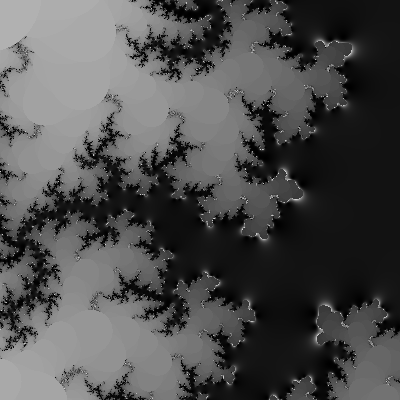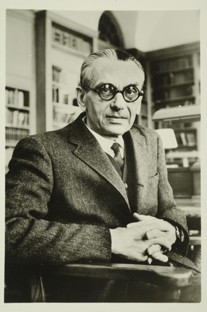Math Related Articles from StarkEffects.com
Mathematical Formulas, Concepts & Trivia
Why is math so fascinating? At least since the time of the ancient Babylonians, people have found mathematical concepts absolutely wonderous. Among the many wonders is how a human game, mathematics, can correlate so well with the workings of the real physical world. Beyond that unanswerable question is the question of how much math can tell us. What are the limits of knowledge of the physical world based on mathematics.
Goedel, Einstein, Newton, Liebniz, Descarte, Euclid and hundreds more gave us the rich and fascinating world of mathematics. This webpage is devoted to sharing the wonder!
Math: The Mandelbrot Set

The Mandelbrot Set is that beautiful fractal made famous in the 1980's with wonderful photographs that brought complex dynamics to popular culture. Or rather, brought the subject of complex dynamics into the discussions in the coffee shops and made mathematics just a little cooler in the eyes of the young.
Images of the Mandelbrot set created by a simple algorithm and rendered by a simple matlab application are shown and the method of creating these images is described.
Gödel's Incompleteness Theorem

Gödel's incompleteness theorems put a limit on what a system of mathematics can claim about itself. They may also show a limit for what we can know.
Math Related Articles
Platonic Solids, more exciting than a platonic relationship. A discussion of symmetry, regular polygons, platonic solids, and the Euler Characteristic
Finding Edges in Images -The Sobel Operator

The Sobel operator is a commonly used image processing method for finding edges in an image. You can use it to quickly find outlines of objects in a photo or video feed.
If you have ever wondered how to easily get an outline from an image, such as a photograph or even a live camera feed, this article describes a simple process using the Sobel operator. With this method you can take a photo and quickly draw just the outlines of the objects in the photo. This is a commonly used image processing operation that allows machines to find information that your brain automatically picks out, or sometimes the machine can even cut through clutter that your brain won't.
Winning the Lottery: Just what is the probability of winning the lottery? This short page will show you how to calculate your chances, and justify the lottery's alias: A Tax on People That Can't Do Math.
Fibonacci series: The first recursive series known to Europe. This article shows what the Fibonacci numbers are and how the recursive series works. It only hints at some of the amazing applications of the series.
The Golden Ratio, a fascinating number. The Golden Ratio has applications to aesthetics, biology and other sciences, this article shows one example.
The quadratic formula is a quick, easily recalled formula for solving a quadratic equation. Quadratic equations show up in all kinds of science and engineering problems as well as your high school homework. This short article shows how to derive the quadratic formula just in case you forgot the formula or you are just going crazy trying to remember how you derived it once a long time ago.
A Taylor series expansion can turn a complicated function into a simple power series polynomial, sometimes. This little trick is very useful in science and engineering and especially in computer modeling of physical phenomena when working with functions that are difficult and time consuming to calculate values for.
Finding the angle of a 2 dimensional distribution Continuous or discrete 2D distributions have a best fit angle. Here is how to find it.
Zernike Polynomials used for representation of light beam wavefronts. Represent any 2-D surface as long as it has a circular footprint.
Zernike Polynomials MathCAD sheet, in mathcad 2001i format. . This sheet calculates the zernike polynomial of your choice and displays a 3D graph. (Requires mathcad from mathsoft)
Quick Science & Math References
- Our Solar System.
- Earth Facts.
- The Metric System.
- Trigonometric Identities.
- Vector & Tensor Identities.
- Explicit Forms of Vector Operators
- Light & Electromagnetic Spectrum.
- Common Laser Wavelengths.
- Human Physiology Facts.
- Human History Timeline
- Geologic Timeline
- Cambrian Explosion
- Life on Earth Timeline
- ASCII Codes and HTML Display Codes
- Thousands of HTML Symbol Codes
- HTML Symbol Codes for Greek Letters
- The Best Way to put Equations on your Web Page
Physics Basics Series
- Basics of Classical Mechanics.
- Basics of Quantum Mechanics.
- Basics of Electrodynamics.
- Basics of Optics.
- Basics of Mathematical Tools for Physics.
- Basics of Plasma Physics.
- Basics of Solid State Physics.
Math Basics Series
- Numbers
- Arithmetic
- Algebra
- Geometry
- Analysis
Technology Basics Series
- Basics of Remote Sensing.
- Basics of Digital Signal Processing.
- Critical Electronic Circuits
- Infrared Imaging Basics
Knowledge Branches
- Information Theory
- How Reading Works in the Brain
- Psychology of Learning
- Logic
WORK IN PROGRESS
- What is the Stark Effect?
- The Chemistry of Love &/or Addiction
- Critical Thinking: How to question what you see, read or hear.
- Aristotle's Prior Analytics - the birth of Logic.
- Optical Solutions, lenses that solve problems
- Fractals
- PTC - Photon Transfer Curve or Mean Variance Analysis
- 3-D Noise
- Laser Primer
- Rail Guns
- Special Relativity
- Radar Technology
- Acousto-optic Cells
- Harmonic Generation for Laser Frequency Doubling (SHG) and Tripling -using non-linear crystals.
- Measurement: Accuracy & Precision.
- Things you should know about computer modeling of physical phenomena!
- Giant Magneto-resistance
- Peltier Cooling
- Pyro-Electric Detectors
- Piezo-Electric Crystals
- Laser Speckle
- FFT and DFT the fast fourier transform and the discrete fourier transform
- Fabry Perot Etalon
- The Hydrogen Atom.
- PCA (Principal Component Analysis)
- Energy per mass in fuels such as Hydrogen, Gasoline, Kerosene, HMX etc...
- Nobel prize winning work on the CCD
- How does a CCD work and what are the normal characteristics of a CCD
- Nobel Prize Winning work on Giant Magneto-resistance
- FROG -frequency resolved optical gating
- Optical Wavefront Sensing
- THz imaging and time-domain spectroscopy
- Camera Calibration
- Laser Designators
- Resampling
